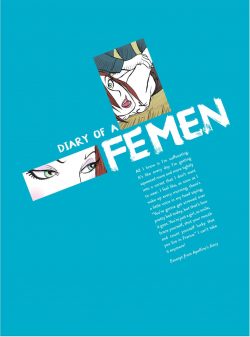
By Éric Liberge & Arnaud Delalande, translated by David Homel (Arsenal Pulp Press)
ISBN: 978-1-55152-650-8 (HB/Digital edition)
After decades of cruel injustice and crushing, sidelining silence, British mathematician Alan Turing – one of the greatest intellects in humanity’s history – is finally the household name and revered pioneer of science he always deserved to be. As well as books and films describing the astounding achievements and appalling way this brilliant, misunderstood man – arguably the creator of the modern world we inhabit – was treated by his contemporaries and society in general, there are also graphic novels (so if you’re interested you should also seek out Jim Ottaviani & Leland Purvis’ The Imitation Game: Alan Turing Decoded) delineating the factual stuff whilst trying to get beneath the skin of a most perplexing and unique individual.
This gloriously oversized (231 x 13 x 287 mm) full-colour hardback biography – also available as an e-book – was first released in 2015 as Le Cas Alan Turing: Histoire extraordinaire et tragique d’un genie and employs an emphatic literary approach that is more drama than documentary. The moving script by author Arnaud Delalande (La Piege de Dante) – via award-winning translator David Homel – only touches on Turing’s early, troubled home life and post-war scandals as the genius descended into self-loathing and court-mandated chemical castration to cure his “social deviancy”.
Mere hints and allegations – let alone actual accusations – of homosexuality destroyed many men until officially decriminalised in Britain’s 1967 Sexual Offences Act, and although (after years of passionate campaigning) Turing was posthumously pardoned in 2013, his loss to suicide probably deprived the entire world of a generation of marvels…
The major proportion of this tale concentrates on World War II and Turing’s work as a cryptographer and inventor at British code-breaking centre Bletchley Park, where an insular young man struggled to convince his officious, unimaginative superiors to let him construct a mechanical brain to defeat the Wehrmacht’s presumed-infallible Enigma machines. Turing’s victories cemented his reputation and ensured that the battle against fascism was won…
The key figures are all there: sometime fiancée Joan Clark, Professor Max Newman, and the weak, shady rent-boy who brought about Turing’s eventual downfall and demise, fully complemented by less well known figures: the MI5 operative who was his constant shadow before and after the war, boyhood lost love Christopher Morcom and so many other unsung heroes of the intelligence war…
Played out against a backdrop of global conflict, Turing’s intellectual obsession with Walt Disney’s Snow White and a recurring motif of poisoned apples (the method by which the tormented soul ended his life) loom large in a story which reads like a movie in the making. Moreover, this powerful tale of an outsider’s temporary triumphs and lasting impact is beautifully and compellingly rendered by true master of historical comics Eric Liberge (Monsieur Mardi-Gras Descendres, Le Dernier Marduk, Tonnerre Rampant, Les Corsaires d’Alcibiade), affording proceedings an aura of unavoidable, impending destiny…
Balancing out the tragedy of chances missed is an informative photo-illustrated essay on ‘The Cryptography War’ from historian, educator and government consultant Bruno Fuligni detailing the development and use of different kinds of cipher and codes; how Enigma changed the rules of the spying game and how Turing changed it all again…

This is an astoundingly effective and moving way to engage with a true story of incredible accomplishment, dedication and terrifying naivety, one that ends with horrific loss to us all and forever-unanswered sentiments of “What If?” and “If Only…”
Text © Éditions des Arènes, Paris 2015. Translation © 2016 by David Homel.













